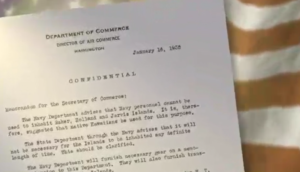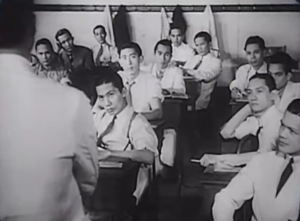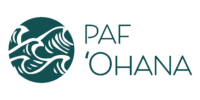Hui Panalāʻau – 1935-1942
One hundred thirty young men from Hawaiʻi were recruited by the United States government from 1935-1939 for a secret expedition in the South Seas. The mission was to occupy the uninhabited Line Islands of Baker, Howland, and Jarvis so the United States could assert territorial jurisdiction over this critical geography to gain the advantage of air supremacy in the Pacific. In three-month shifts, four young men per island would do the seemingly impossible.
For context, non-stop, trans-Pacific air travel was not possible in the 1930s without mid-route air fields for refueling. The U.S. Bureau of Air Commerce had identified the equatorial Line Islands as suitable, as neither Britain nor the U.S. had claimed them, despite guano mining activities by both countries back in the 1800’s. A successful claim under international law would require continous, non-military occupation of each island for a period of at least 365 days.
President Roosevelt authorized the mission. The Navy advised that Navy personnel could not settle the atolls. Then, the U.S. Bureau of Air Commerce determined, perhaps stereotypically, that Native Hawaiians would be best suited for the task.
At the request of the bureau, the Kamehameha Schools administration selected the participants based on various academic, citizenship, ROTC and character criteria, including: “The boys have to be grown-up, know how to fish in the native manner, swim excellently and handle a boat, that they be disciplined, friendly, and unattached, that they could stand the rigors of a South Seas existence.”
The Mission
Corporal Harry L. Theiss, was in charge of the original expedition party to Howland Island in Spring 1935. The young men were tasked with:
“Keeping a check on weather conditions | Farming: cultivating coconuts, vegetables, flower seeds | The study of bird life | Collecting specimens for Bishop Museum | Mapping the island | Fishing: recording the types caught (also as food) | Landing field: preparing most suitable area | Daily log: recording all happenings of importance | Additional occupations c1;s may be advisable.” -From Hui Panala’au Memoirs
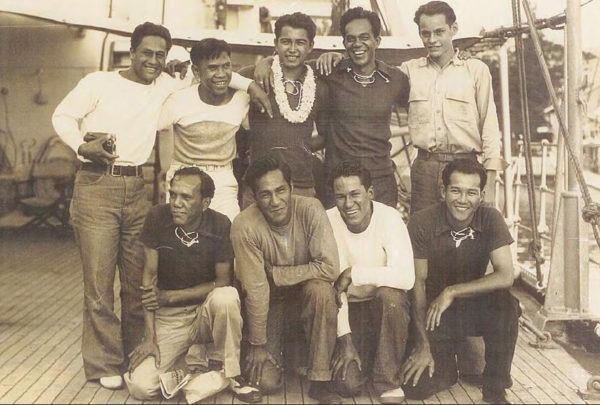
Graduates and students of Kamehameha School onboard the Itasca, 4th expedition, January 1936. Back row, left to right: Luther Waiwaiole, Henry Ohumukini, William Yomes, Solomon Kalama, James Carroll. Front row, left to right: Henry Mahikoa, Alexander Kahapea, George Kahanu, Sr., Joseph Kim. (Photo courtesy George Kahanu, Sr.). Photo Credit: Center for Oral History, Social Science Research Institute, University of Hawai‘i at Mānoa and Bernice Pauahi Bishop Museum.
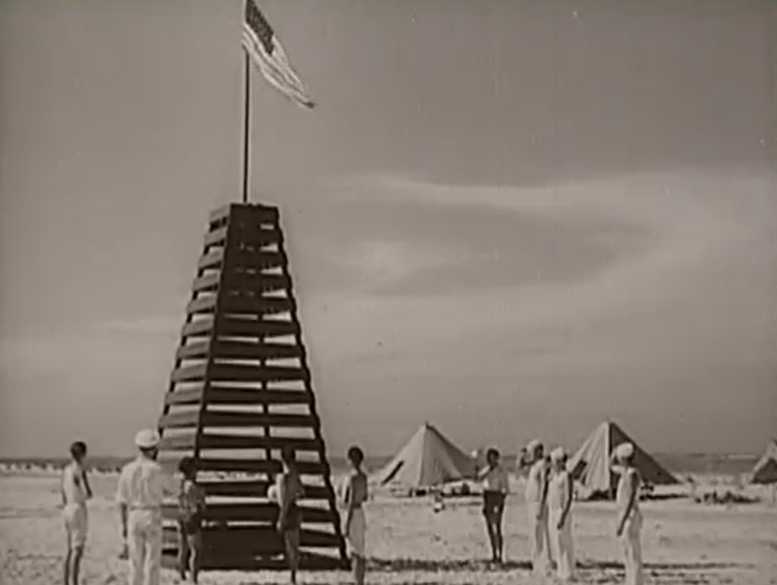
The contributions and sacrifices of these young men established the Equatorial Pacific Islands as part of the United States.
On December 8, 1941, a fleet of Japanese twin‐engine bombers attacked Howland, Baker, and Jarvis Islands.
Joseph Keliʻihananui and Richard “Dickey” Whaley were killed in that attack. The United States had officially entered into World War II with the attack on December 7th, at Pearl Harbor.
Secretary of the Interior Harold L. Ickes sent letters of condolence to the Keliʻihananui and Whaley families, telling them: “In your bereavement it must be considerable satisfaction to know that your brother died in the service of his country.”
In 1954, the remains of colonists Keli‘ihananui and Whaley were brought back to Hawai‘i and buried at Schofield Barracks on the island of O‘ahu. In December 8, 2003, they received proper burial at the Hawai‘i State Veterans Cemetery in Kāne‘ohe, Hawai‘i and honored for their work and sacrifice for their state and country.
In years to come, the islands’ designation as National Wildlife Refuges and Marine National Monument, which was directly attributable to the Hui Panalāʻau colonists.
The 2010 documentary film, Under a Jarvis Moon, tells the incredible story of the Hui Panalā‘au. Co-directed by Noelle Kahanu and Heather Giugni, it is a tribute to Kahanu’s grandfather, George Kahanu, Sr., and the other Panalā‘au members.
